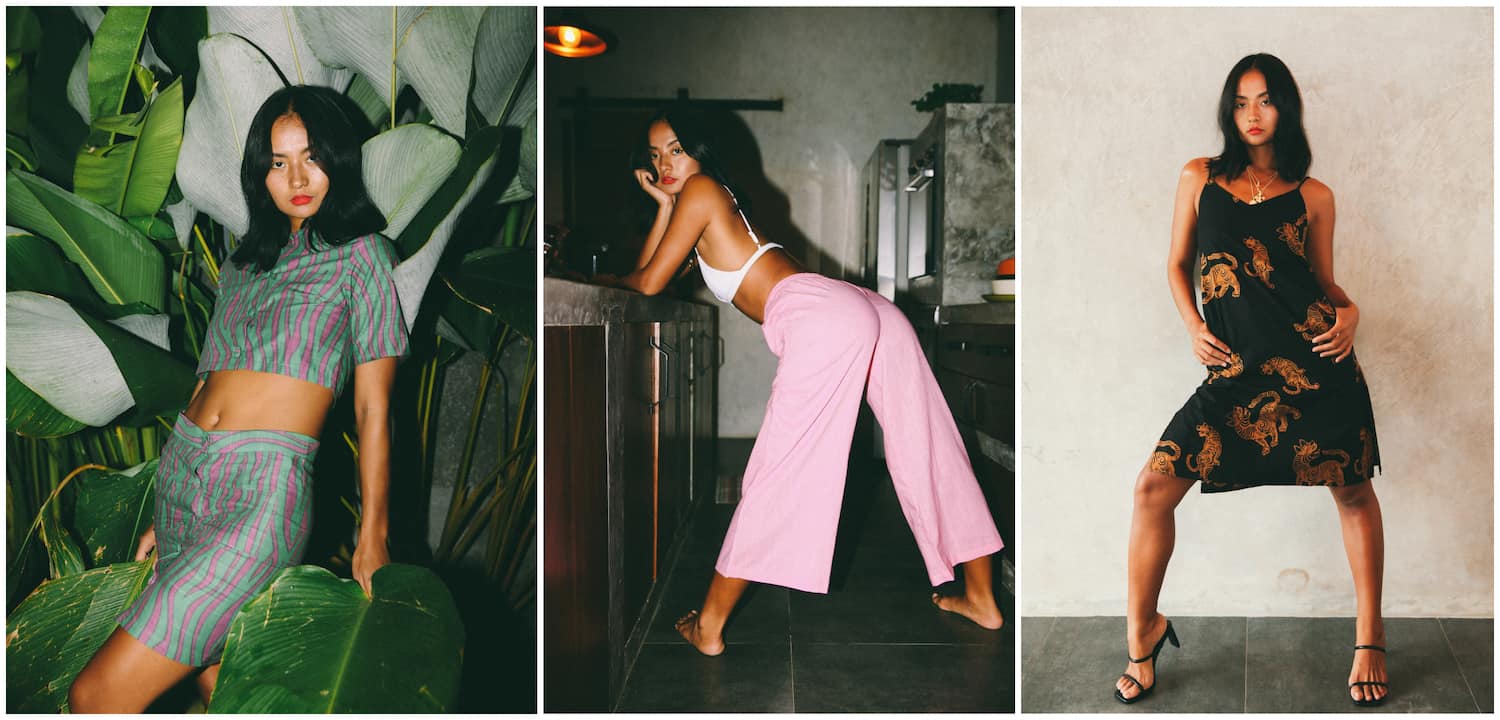It’s official: summer is here (living in the tropics, does it ever really leave?) and with it comes our old foe, humidity. That means being in a perpetual state of moist. We can’t change the weather, but we can change just how sodden and sticky we are with the help of Stain, a sustainable brand that creates fun linen clothing that doesn’t cost the earth.
Hands up if most of your summer wardrobe is actually super impractical for the humidity? Yeah, us too. It’s too easy to pop into a high-street store, buy a cute dress made from a synthetic material and focus on how chic we’ll look at rooftop parties. But then the heat arrives, and so does reality, and the fact is these garments aren’t breathable, practical, or sustainable. Luckily, we’ve found the solution to staying and looking cool: linen.
Apart from evoking a just-lounging-around-my-villa vibe, linen has a lot of other things going for it. Firstly, it wicks moisture, dries quickly, and is breathable, so you won’t need quite as many clandestine deodorant spritzes. Secondly, it’s strong, especially when it’s wet, so dealing with your daily dampness is no biggie. Linen also has natural insect-repellent properties, which can only help us in our battle against mozzies. Adding to all of that, linen is friend to the earth. It can be worn untreated (undyed), but if it is dyed, it still remains one of the most biodegradable fabrics around. Linen comes from the hard-working flax plant which contributes to an array of products (e.g. linseed oil, flax seeds, fire hoses) without requiring much water or producing much waste.
Utilising sustainable textiles like this is rare in the fashion industry. According to a recent article published in journal Nature Reviews Earth and Environment, the fashion industry annually guzzles up 79 trillion litres of water, is responsible for 20 percent of industrial water pollution, contributes 190,000 tonnes of microplastic pollution to the ocean, and creates 92 million tonnes of textile waste. Luckily, Stain knows that creating awesome clothes and hurting the planet do not have to be mutually exclusive.
Introducing Stain
The eco-conscious label, launched in 2018, favours the slow fashion approach, producing good-quality clothes that are not only designed to last, but also to inspire people to make conscious decisions about fashion. They hand-make their garments using upcycled natural linen and linen-cotton blends from deadstock fabrics to prevent textile waste. They also design their own original prints, using screen printing and batik printing to bring them to life. This season’s offering is the ‘70s funk-inspired Urban Jungle ‘20 Collection. The collection centres around four groovy animal prints (Acid, Miami, Lemonade, and Carnivore) and five bold pastel colours (Lychee, Guava, Berry, Banana, and Papaya) in waist-cinching and oversized shapes to inspire confidence and wildness in their wearer.
The Urban Jungle ’20 Collection

Stain’s work for the planet doesn’t stop with upcycled fabrics; they have tight-knit relationships with their artisans and suppliers, ship their garments in biodegradable packaging (made out of cassavas!), and reduce textile waste by ensuring accuracy in their designs before cutting. They also support the #IMadeYourClothes campaign, which champions transparency within the fashion industry.

Like most sustainable fashion pioneers, Stain not only wants consumers to buy slow fashion garments; it wants them to look after them. After all, the better-kept your garments are, the longer they last and the less often you need to buy replacements. Quality over quantity is our mantra when it comes to fashion. Here’s our insider tips on how to love your linen:
Get handsy
Avoid washing linen in the machine – it can lead to shrinkage and damaged fibres, not to mention wasted water (linen likes lots of space inside the drum, sans other fabrics). To hand-wash, gently move the garment around in cool water and mild detergent. Then, drain the soapy water and repeat the process with clean water until the soap is gone. Oh, and resist wringing!
Keep it airy
When it comes to drying, linen loves good ol’ fresh air. If there’s excess moisture in your garment, roll it in a towel before hanging it out to dry on a padded hanger or laying it flat on a drying rack.
Let it all hang out
Being all-natural and lovely, linen can easily wrinkle, so make sure to hang rather than fold. Try to give it as much room as possible to avoid creating new creases.
Open up
Undo the buttons on your linen clothing before you wash. This gives the fabric enough room to move around freely without gaining any deep wrinkles, and also protects your buttons from straining and popping off.
Press on
If your linens are a tad too wrinkled for your 10 am meeting, wash or spritz them with water and then iron them. The heat from the iron will simultaneously dry the fabric and eliminate wrinkles. Remember to set your iron to the linen setting.


